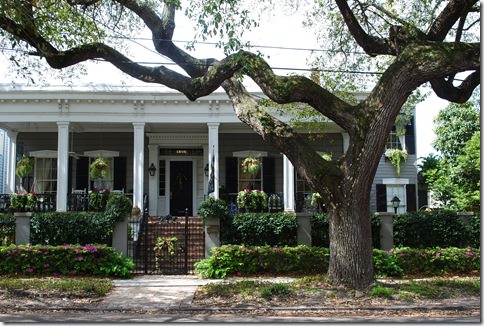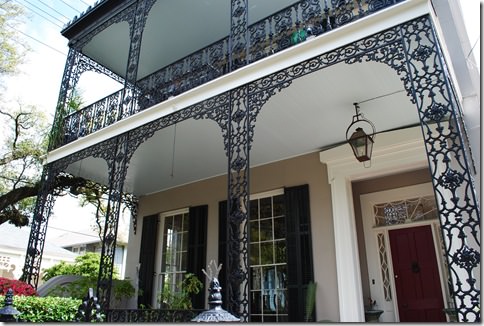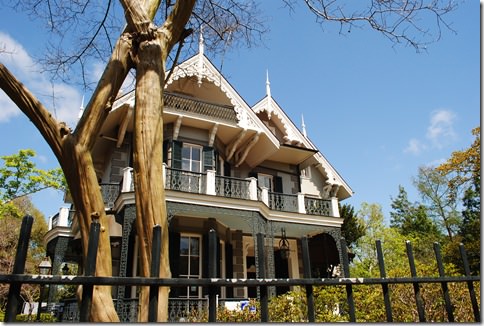I was just in New Orleans during Jazz festival, and I got to thinking...
Everyone should see this! Repeatedly!
Architecture in New Orleans is an unusual European/Creole/American mix.
Of course, that makes sense, given its colorfully off-beat cultural history!
It's what draws a lot of tourists, and it sets the perfect backdrop for
laid-back and stylish music, food, and people.
so...
Here's a great 2-part journey for you:
First, tour the Architecture and Interiors of New Orleans.
After you have sampled meals at Commander's Palace, Napoleon House, Nola, and Galatoire's, you will have experienced many unique gastronomic experiences -- with plenty of Architectural and Interior Design eye candy to boot.
You will find Spanish architecture in the French Quarter,
French-Creole buildings in the Faubourg-Marigny area,
and American-Creole in the Lower St.Charles area,
up through the Uptown area.
Then you must take in the old buildings and plantations
along the River Road, between new Orleans and Baton Rouge.
You will see some differences in style which reflect each owner's
(sometimes odd) personal and cultural influences: from Tuscany to the Far East.
Although no photo can do it justice, Here's what I'm talking about:
The French Quarter ( with its Spanish architecture!) :
Shotgun house, Tchopitoulas St:
updated cool interior
Typical New Orleans:
The preeminent Louisiana architect, A. Hayes Town, designed the
most beautiful homes, primarily in his hometown, in Baton Rouge.
His work honored the beauty and style of the old plantations:
Inside an "uptown" New Orleans home:
New Orleans:
New Orleans:
New Orleans:
Another A. Hayes Town house in Baton Rouge:
But there's SO much more architectural delight outside of these cities~
From the City of New Orleans to the City of Baton Rouge,
there is a road that leads past many historical sites.
It is called the River Road.
It follows the Mississippi River for 70 miles, and as you drive along,
you pass several beautiful and historied plantations; among them:
Houmas House, Destrehan Plantation, San Francisco Plantation,
Nottoway Plantation, Oak Alley, and Oak Branch.
I highly recommend that rather than passing them by, you stop and take a tour.
Nottoway Plantation between Baton Rouge and New Orleans:
Built in 1858, Nottoway Plantation was one of the largest plantation homes in Louisiana. Nottoway was the centerpiece of a 7,000 acre sugarcane plantation.
Originally it had 6,200 acres and 155 slaves.
Nottoway has 64 rooms done in an italianate style,
and the grounds include several outbuildings and slave quarters.
Oak Alley Plantation:
A not unusual sight along River Road, these
dilapidated old buildings have their own appeal...
There is a wonderful book that I happened to come across
at a friend's house that I have now ordered.
I loved it and highly recommend it. It's called,
Vestiges of Grandeur: Plantations of Louisiana's River Road.
This book covers the architecture, interiors, and some history of the
70 mile stretch between New Orleans and Baton Rouge, Louisiana.
The photography is absolutely beautifully done.
Get out your map, get in your car with a good camera, and don't forget your copy of
Vestiges of Grandeur: Plantations of Louisiana's River Road !
Have a great day!
xo
Valerie
1-via 2-via 4-via 5- via 6-via 7-via 8-via
9-via 10-via 11-via 12-via 13-via 14-via
15-via














Valerie, I would like to get a copy of that photo of Nottoway by Steve Ramos, can you tell me how to contact him. I would like very much to use it as a cover photo for my new book.
ReplyDeleteAny help you can offer will be greatly appreciated.
Thanks,
Diane Pepper Smith
peppersmith40@yahoo.com